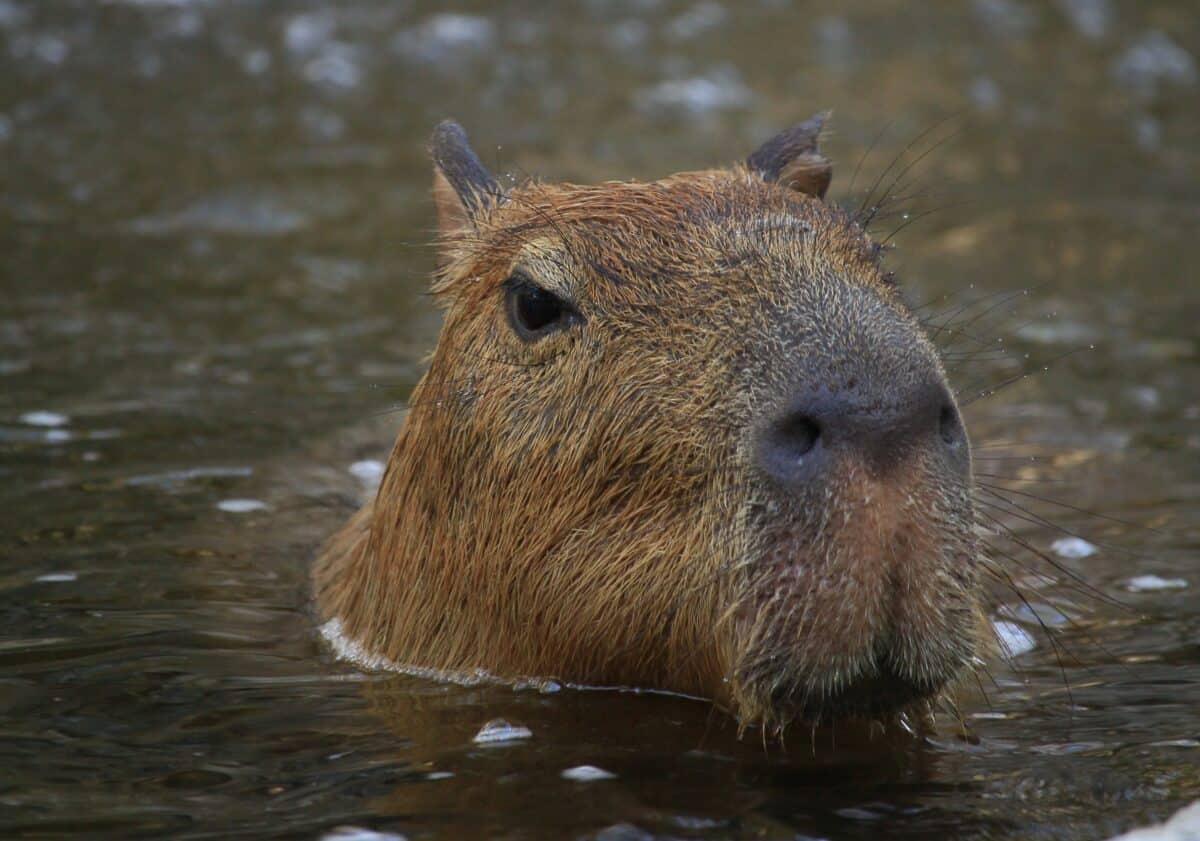Can A Capybara Be A Pet?

As the largest rodent in the world, capybaras (Hydrochoerus hydrochaeris) look like a cross between a guinea pig and a deer. These rodents look wonderful in pictures, but can one actually live with you?
The Capybara Basics
Capybaras are native to South America and can weigh up to 170 pounds. As you might imagine, owning a pet capybara comes with some challenges simply due to their size — but that doesn’t mean it’s impossible.
Capybaras are social animals that live in groups of 10 or more in the wild. They are known for being very friendly toward humans and get along well with other animals, too. In fact, some people who live in South America actually do keep capybaras as pets. Having a single capybara is going to be a limitation since the animal won’t have its full social existence. You can spend time petting it but you’ll never be a total replacement for a capy family.
Capybaras are semi-aquatic, which is to say that they spend much of their lives in water. So, on the plus side, you won’t need to spend much time bathing your capy, but on the other hand you’ll need a good-sized pool, pond, or even a lake for it to enjoy.
Capybara use their four-chambered stomach to eat all sorts of things around their natural habitat. Being herbivores, their diet consists mainly of wild grasses, aquatic plants, roots, and similar plant matter.
What You’ll Need
If you’re thinking of getting a pet capybara, you’ll need to have a lot of space for your new friend to roam — a backyard measuring at least 50×50 feet is ideal. You’ll also need to provide your capybara with a large enclosure that has plenty of room for swimming, as they love water and are good swimmers. In the wild a capy herd might roam over a space of 10 or more acres (depending on a number of circumstances. While this isn’t possible for most people to provide, it it import that they have sufficient space to exercise
Capybaras are herbivores and their diet consists mostly of grasses, fruits, and vegetables. In the wild, they spend most of their time grazing. If you’re keeping a pet capybara, you’ll need to make sure that its diet is well-balanced and nutritious. The best way to do this is to consult with a veterinarian or an animal nutritionist who can help you create a healthy diet plan for your pet.
Because their natural diet[1]Capybara Diet and Predation: https://en.wikipedia.org/wiki/Capybara#Diet_and_predation will be so hard to replicate, most capy owners rely on a combination of hay and guinea pig pellets for keeping their friend fed. Because these alone won’t fully sate the capy, the standard fare is augmented with vegetables, some supplements (to add in the vitamins missed when not enjoying their diet in the wild), and even some fruits.
Because capybara spend significant amounts of time in the water you’ll need a good-sized pool area for them. They also do their bathroom activities in the water, which means whatever body of water you select will need to be cleaned regularly, or will have to be sufficiently large that the capys’ waste can be handled by the ecosystem.
Legal Requirements
Most regions will consider a capybara to be an exotic pet, which can require a special license in order to import and own the animal. These rules will vary widely from place to place, so you’ll have to do your own research in order to determine any national, regional, or local rules about capybara ownership.
New York
For example, New York City explicitly disallows the ownership of “large rodents” so a capybara would definitely not be an OK choice in that locale (no matter how big your apartment is!).[2]NYC 311: https://portal.311.nyc.gov/article/?kanumber=KA-02255
Florida
Alternatively, in Florida, the capybara is considered a Class III Wildlife species and is an allowable pet so long as you obtain the proper license.[3]Florida Fish and Wildlife Commission: https://www.flrules.org/gateway/ruleNo.asp?id=68A-6.004
Michigan
The state of Michigan considers the capybara — as a non-native rodent — to be an Exotic Pet and thus has to be inspected before entering the state. This means the animal requires an “official interstate certificate of veterinary inspection (CVI)” to enter the state. That said, no specific permit it required to enter or reside in Michigan once this has taken place.[4]Michigan.gov: https://www.michigan.gov/mdard/animals/id-movement/movement/other-species-rabbits-rodents-reptiles-and-amphibians
These rules will vary, but generally speaking a capybara is a difficult animal to have as a pet — legally speaking — and you will almost certainly have to jump through some legal hoops in order to legally own and transport them.
Concluding Thoughts
Keeping a pet capybara comes with some challenges, but it’s not impossible. Capybaras are social animals that need plenty of space to roam, access to water, as well as a clean diet with lots of healthy grasses and vegetables. None of these things are necessarily major problems, but they do add up, making a capy a lot of work.
If you’re considering getting a pet capybara, be sure to do your research first so that you can provide your new friend with everything it needs to thrive.
References
| ↑1 | Capybara Diet and Predation: https://en.wikipedia.org/wiki/Capybara#Diet_and_predation |
|---|---|
| ↑2 | NYC 311: https://portal.311.nyc.gov/article/?kanumber=KA-02255 |
| ↑3 | Florida Fish and Wildlife Commission: https://www.flrules.org/gateway/ruleNo.asp?id=68A-6.004 |
| ↑4 | Michigan.gov: https://www.michigan.gov/mdard/animals/id-movement/movement/other-species-rabbits-rodents-reptiles-and-amphibians |
